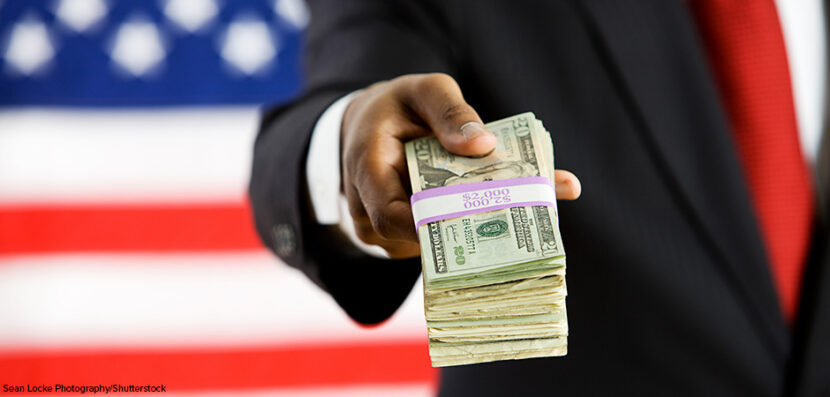
Dollar for Dollar: Which Candidate is “Winning”?
Fundraising is at the heart of every political campaign. Money is needed to purchase expensive television and print ads, radio spots, campaign literature, travel, event space, and pretty much everything else a candidate needs to get his or her message out. Therefore, candidate who manages to raise more money has an advantage over his or her opponent. That’s why political analysts spend a lot of time tracking fundraising, especially during a presidential election season.
So in 2020, who has the fundraising advantage: Joe Biden or Donald Trump? Election Central takes a closer look at what’s in each candidate’s war chest.
How Are Campaigns Funded?
You’ve seen the ads asking you to donate to a candidate’s election committee. So far, the Biden campaign has raised $540.6 million dollars. The Trump campaign has raised $487.8 million, despite having more time than Biden to reach out to supporters. But that’s far from the whole picture.
Candidates and their committees alone don’t do all the fundraising. Each is backed by his or her own party: the Democratic National Committee (DNC) for Biden, and the Republican National Committee (RNC) for Trump. These organizations have well-organized networks of donors who funnel money into each candidate’s campaign fund. Candidates also can receive virtually unlimited money from Political Action Committees (PACs), which are independent groups that raise money to help support a candidate. These groups are regulated differently than individual donors, who limited to a maximum donation amount. PACs can raise millions of dollars for their candidate of choice.
Combined, Biden and the DNC have raised $990 million so far, while Trump and the RNC have raised a greater combined total of $1.33 billion.
A Changing Trend?
But August saw a changing trend. In that month, the Trump campaign raised $61.7 million and the RNC raised $67.6 million, for a combined total of roughly $129 million. That’s a lot for sure, but nowhere close to what Biden was able to raise. In August, his campaign raised $212.2 million and the DNC another $78.4 million, for a combined total of $291 million. That is more than twice the amount of funding that Trump collected in the same time period.
So Who Has the Advantage?
You might think that determining the advantage in campaign funding is as easy as putting dollars against dollars, but it’s not. And dollars don’t guarantee votes. First of all, you have to look at where the money is coming from. Is the bulk of the campaign purse made up of donations from individual small donors? This could suggest widespread public support. Is most of the campaign financing coming from wealthy corporations and other large donors, such as private interest groups? This might indicate a narrower base of support. In August, Biden received $159.8 million in individual donations, with $64.6 million of this coming from small-dollar donations (meaning that they were under $200 each). Trump, meanwhile, collected $45.9 million in individual donations, with $16.8 million coming from small donors. This would indicate more widespread public support for Biden (at least in August).


